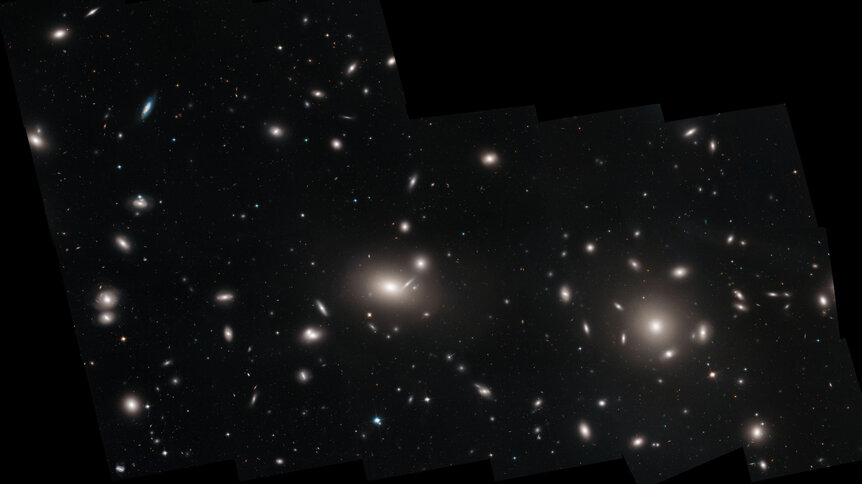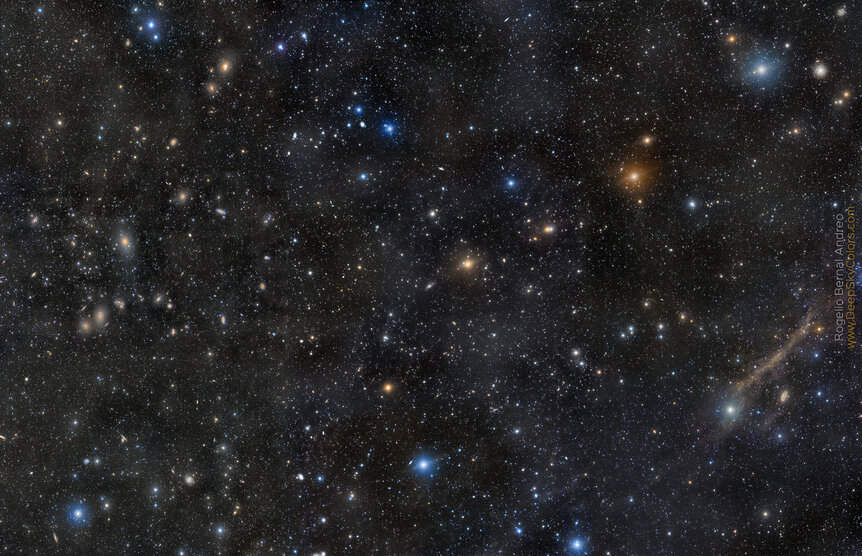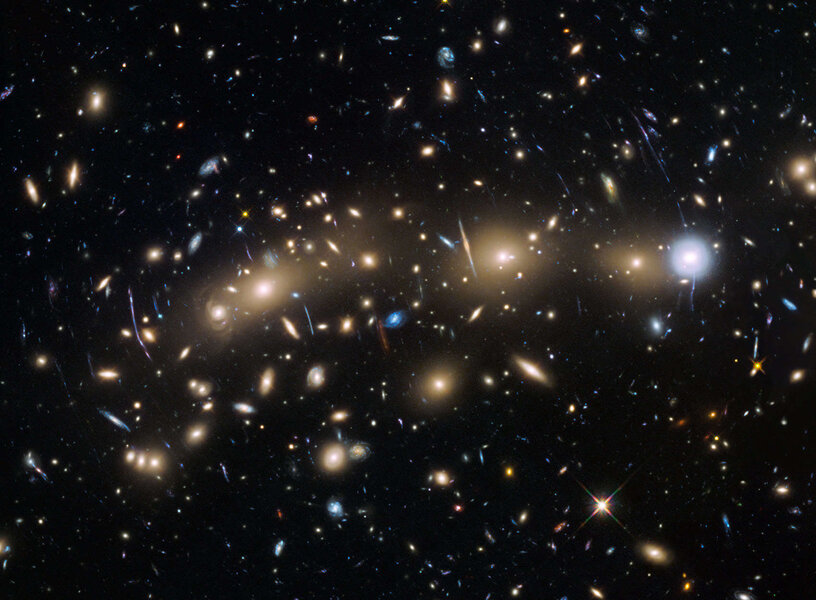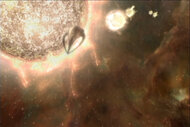Create a free profile to get unlimited access to exclusive videos, sweepstakes, and more!
Surprisingly high fraction of dead galaxies found in ancient galactic city
What's killing these extremely distant galaxies?
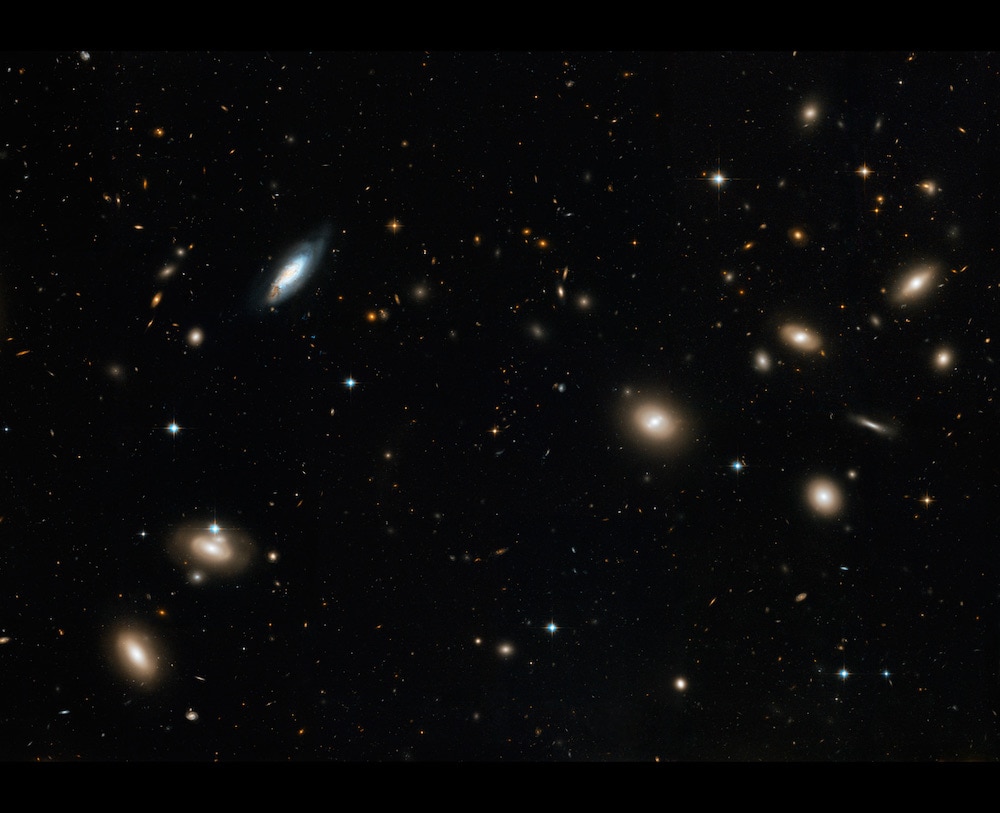
Our Milky Way galaxy lives in a small group of others including the Andromeda galaxy and a few dozen much smaller ones. But bigger groups exist: Galaxy clusters can have hundreds of big galaxies in them, all orbiting around their mutual center of mass.
We think these clusters were some of the earliest and biggest self-gravitating structures to form in the Universe, as normal matter — electrons, protons, and so on, the kind of stuff we’re made of — fell towards and coalesced around huge filaments of dark matter not long after the Big Bang. Some of these huge clouds of gas started collapsing, and as they did they fragmented, creating swarms of protogalaxies that all orbited each other. If one protogalaxy grew a bit larger than the others it would attract more material and grow much faster, forming lots of stars early on even as the other protogalaxies were still getting their act together.
In this way a protocluster would form, and as the protogalaxies in it self-organized via gravity, they eventually become true galaxies, and the protocluster becomes a true cluster.
Astronomers have found quite a few protoclusters by looking deep into the Universe — the finite speed of light means that we see objects that are very far away as they were when they were young. Look back far enough and you can see things as they existed when the Universe itself was young, and protoclusters common.
Galaxies that make lots of stars are very bright in ultraviolet light, so to look for protoclusters you can look for clumps of such UV-bright galaxies. It’s a tried-and true method.
But what if the galaxies in the protocluster die young? So young that they’re not very bright in UV. Until recently most astronomers would’ve assumed that didn’t happen, so why worry about it?
Yeah. Until, that is, the discovery of the protocluster called MAGAZ3NE J095924+022537 — let’s call it J0959 for short [link to paper]. It was not found by looking for clumps of UV-bright galaxies, but instead it was seen in a survey of the deep Universe called UltraVISTA, an ultra-deep survey using the 4-meter VISTA telescope. A team of astronomers found a couple of galaxies near each other in the sky and at about the same distance from Earth; their light took a staggering 11.8 billion years to reach us, so we see them when the Universe was only 2 billion years old.
Follow-up observations were made using a camera on the Keck telescope for a project called Massive Ancient Galaxies At z > 3 NEar-infrared, or MAGAZ3NE — z is a shortcut astronomers use for redshift, which itself tells us the distance to galaxies; a redshift of z > 3 is very far away indeed. What they found is that these two galaxies were at the centers of two different but neighboring protoclusters, separated by about 100 million light-years. But they’re very different.
J0959 has the one really big galaxy, with a mass of over 200 billion Suns, which is impressive for such an early cosmic time. They also found 38 other protogalaxies forming around it, but they’re… odd. A large fraction, 73%, of the galaxies don’t appear to be forming stars! Usually that fraction is more like 11% for protoclusters at that time in the Universe, so something really weird is happening in this protocluster.
If a galaxy can’t make stars, eventually all the stars in it die off, and the galaxy metaphorically dies as well.
What is killing all these galaxies?
Astronomers call this suppression of star formation quenching. We see it in small extent in the nearby Universe in fully formed clusters like the Virgo cluster, where a handful of galaxies seem to be dying, and in some clusters where it’s more extensive, like in the Coma cluster, where many of the citizen galaxies appear to be quenched. This is usually due to the environment of the cluster: Galaxies all move through the cluster, and there is a small amount of gas between galaxies they move through. As they ram through this material it can blow out the galaxies’ internal gas, gas used to make stars. If they lose that gas they lose the ability to make stars, and get quenched.
But in protoclusters such quenching is rare; the galaxies have a huge amount of gas in them as they form and should be prolifically making stars. That’s what has been seen ubiquitously in the past.
But not in the J0959 protocluster. However, the astronomers noticed something else: The more massive a galaxy in the protocluster is the more likely it is to be quenched. That implies it’s not just the external environment but something happening inside the galaxy that’s choking off starbirth.
The question is what. And that’s not clear. It’s worth noting that the other protocluster found near it appears in all other respects to be normal, so it’s something unique to the J0959 protocluster.
Well, unique so far. It’s the first one ever found like it. That’s partly due to the different way it was found; the old way of looking for clumps of UV-bright galaxies will preferentially yield “normal” protoclusters and suppress finding quenched ones, so looking in a different way may uncover more of them.
That would be interesting! Finding a protocluster with quenched galaxies in it is shocking, like finding a newborn baby is a member of AARP. The timeline doesn’t make sense, so something really peculiar is going on. It wasn’t that long ago that protoclusters were theoretical, with the first ones actually being found pretty recently. And in general in science, when you discover some new object it’s generally because it’s the easiest of its kind to find: The brightest, usually in astronomy, or the closest. So it’s natural we’d find the UV-bright ones first, and then start finding outliers later.
But is the J0959 protocluster an outlier, or are such structures with a high fraction of quenched galaxies more common than we think? Now that we know they’re out there astronomers will be looking for more, and hopefully more clues to why they exist at all will turn up.
